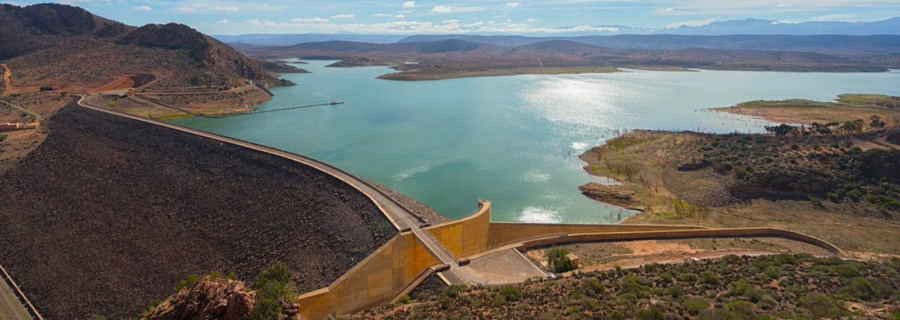Three reasons why dam owners should prioritize instrumentation and data
Dam safety projects are fascinating for a geotechnical engineer. Each site brings its own history and quirks. These projects provide interesting puzzles for us to solve, so we can understand what’s happening at each site and then work with our clients to help them manage their assets and associated risks.
After a decade of professional experience working on these types of projects, I’d like to stress two vital components: quality instrumentation and reliable data. Geotechnical engineers use instrumentation to observe and assess conditions—like groundwater levels or soil deformation—to evaluate the performance of dams and identify any safety issues. We rely upon instruments like weirs, piezometers, inclinometers, and strain gauges to understand how a dam is performing.
Do you have adequate instrumentation on your site, and are you maintaining it so that you have quality data? Here’s why I’m asking: dam owners and operators want to reduce operational and commercial risk as much as possible.
The risks I’m referring to are related to the overall performance and functionality of the structure. Instruments are used to flag conditions that will tell us if the performance is changing or deteriorating. Injury, loss of life, environmental damages, or structural damages are all potential outcomes of a dam safety emergency or failure.
Instrumentation data can help better manage those risks. Let’s look closer at three of the benefits of prioritizing instrumentation and maintaining data collection.
1. Minimize the number of assumptions
For geotechnical engineers, it can be challenging to understand how a structure is performing if we don’t have information about what’s happening inside. When working on dam safety-related assessments, it’s necessary to compare observations from the field with the theoretical performance of a dam to assess whether the dam meets safety guidelines. When engineers don’t have that data, they need to make assumptions. You introduce uncertainty each time you assume something.
For example, the phreatic surface is critical to the geotechnical stability of an earth-embankment dam. Piezometers, when installed in key areas, can provide an accurate picture of the phreatic surface, which is used in the stability assessment. The use of instrumentation increases the confidence of engineers (and clients) that an assessment is accurate, whether the results are favourable or unfavourable.
Fewer assumptions mean you can have more confidence that your assessment matches the actual conditions. Limiting assumptions reduces uncertainty and facilitates the management of risk when you can be confident in understanding the conditions that need to be managed.
2. Create a more complete picture
A lack of information can affect management of risk. More information leads to increased confidence, because when you know what’s driving the behaviour and performance of your dam, then you can better manage your risk.
Functional instrumentation provides valuable information and creates a fuller picture. Imagine starting a connect-the-dots picture of a teddy bear with only eight, equally spaced-out dots. Then compare it to a drawing of the same bear but with 20 dots placed in strategic locations. Those 20 dots will present a much clearer visual. Tools like updated topographic surveys, piezometers, and weirs can help engineers see these “dots.”
If you can only see a small number of “dots” on a dam project, or if those dots are not at meaningful locations, you may not fully understand the problem. And when there are fewer “dots,” engineers need to make more conservative assumptions about the input parameters used in their analyses. Those assumptions may lead to an inaccurate assessment of a structure.
3. Work with accurate and reliable measurements
For dam safety programs, it’s important to work with accurate and reliable measurements. Over time, instruments may fail. By maintaining your instrumentation, introducing redundancy, and collecting measurements regularly, your geotechnical team will be able to recognize issues and react before those issues turn into serious problems.
The latest generation of geotechnical instrumentation allows for simpler installation, cloud computing, and more advanced data analysis software. By taking advantage of these new technologies, you don’t have to send staff to a site to collect data. The interpretation of the data can be fully automated and presented quickly in a meaningful manner, which allows engineers and owners to make decisions more promptly.
Engineers have a responsibility to keep the public safe while helping owners protect their assets from commercial and financial damages. Access to proper instrumentation and reliable data will help us work together to manage the many facets of risk that are applicable to all dam owners.
Learn more at:
< Back to Articles | Topics: Trends

